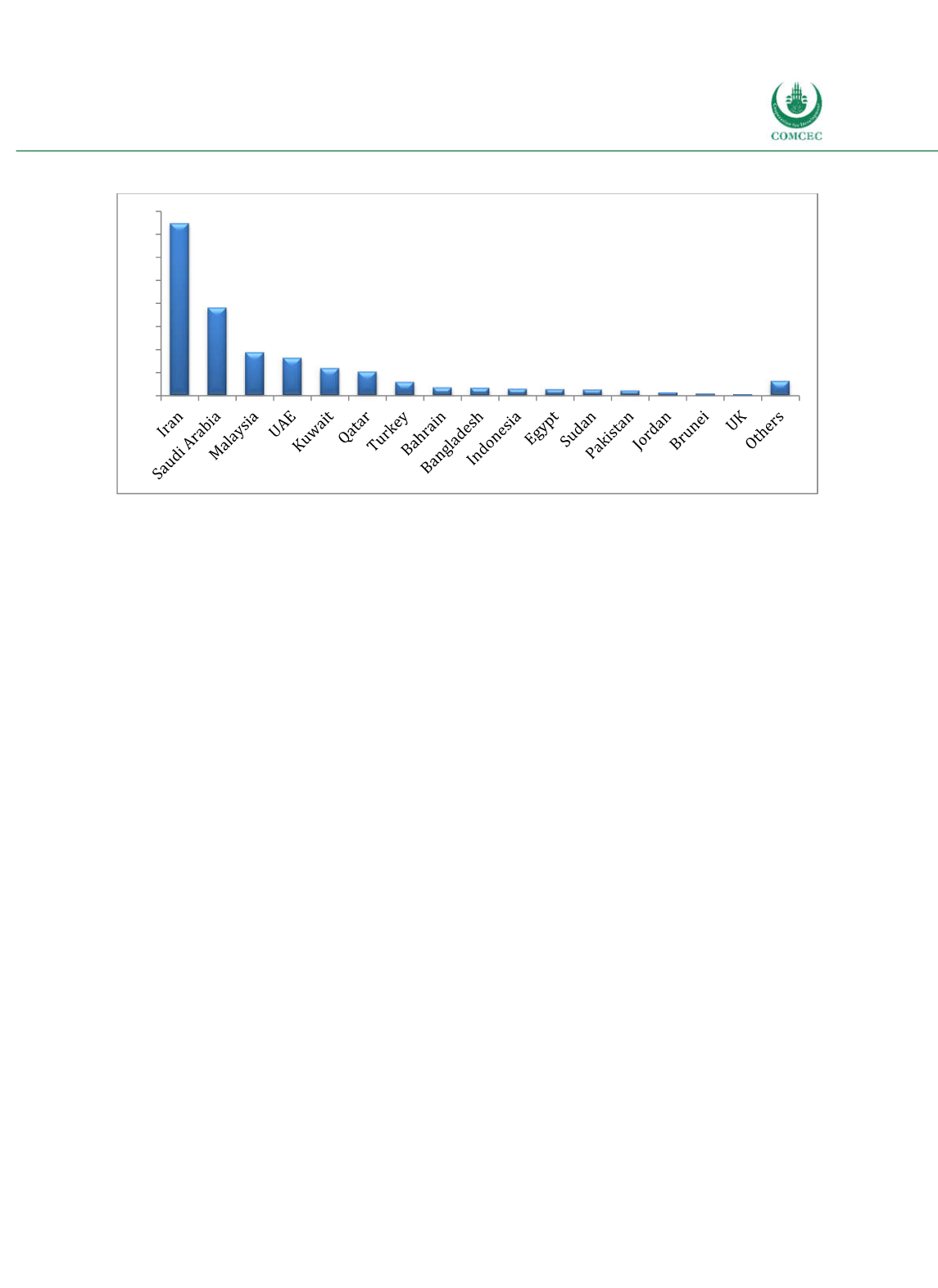

Improving Public Debt Management
In the OIC Member Countries
61
Figure 3-17: Shares of Global Islamic Banking Assets by Country (2015)
Source: IFSB (2016, p. 9).
3.3.2
Islamic Bonds
Sukuk
are private or public financial certificates commonly referred to as "
sharia
compliant"
bonds.
Sukuk
are defined by the Accounting and Auditing Organization for Islamic Financial
Institutions (AAOIFI) as “certificates of equal value representing undivided shares in the
ownership of tangible assets, usufructs and services or (in the ownership of) the assets of
particular projects or special investment activity” (AAOIFI 2008). In contrast to common
bonds,
sukuk
do not pay interest. The investor rather acquires a share of the underlying project
that the
sukuk
bond is linked to. Investors either participate in profits in the form of equity
holdings of the underlying asset or project, or in other forms of profit and loss sharing that
yield flexible returns on the investment (
musharakah
). Another possibility is to earn fixed
income by receiving rental payments from the issuer, similar to leasing (
ijarah
), or by engaging
in a form of trust financing (
mudarabah
). At the end of the contract term, the issuer rebuys the
investor’s share of the asset at face value (Lewis and Algaoud 2001). Sovereign
sukuk
can be
connected to projects that yield an assessable rate of return, for example a factory or a trading
company (
mudarabah
), and to projects that do not yield a readily identifiable rate of return
such as, for example, schools (
ijarah
). In both cases, investors that buy the
sukuk
certificate
become coowners (see also Table G03 in the Glossary). Securities that allow investors to
participate in government revenues in return for their investment in public services are
another common funding instrument (Sundararajan et al 1998).
The first
sukuk
issuance by a government took place in 2002 in Malaysia and has become more
common since then (Jobst et al. 2008). Figure 318 illustrates the trend of increasing
sukuk
issuance. In 2012 and 2013 the highest amounts of
sukuk
issuance were observed. In 2014
sukuk
issuances slowed down and in 2015
sukuk
issuances dropped to $60.69 billion. The
decline in international
sukuk
in 2014 can partly be explained by uncertainties on the global
financial markets. Additionally, there were several longterm
sukuk
that matured in 2014 and
were not reissued. The major decline of total
sukuk
issuance in 2015 came from a decrease in
domestic
sukuk
caused by the decision of the Malaysian central bank – the most prolific issuer
of sovereign
sukuk
– to stop its shortterm liquidity management
sukuk
program (IIFM 2016).
Sukuk
issuance hit a record in the first quarter of 2016 in several countries, namely Malaysia,
Indonesia, Turkey, Singapore and Pakistan. In these countries, issuance was up 22% from the
37.3
19 9.3 8.1 5.9 5.1 2.9 1.7 1.6 1.4 1.3 1.2 1 0.6 0.4 0.3 3.1
0 5 10 15 20 25 30 35 40
















